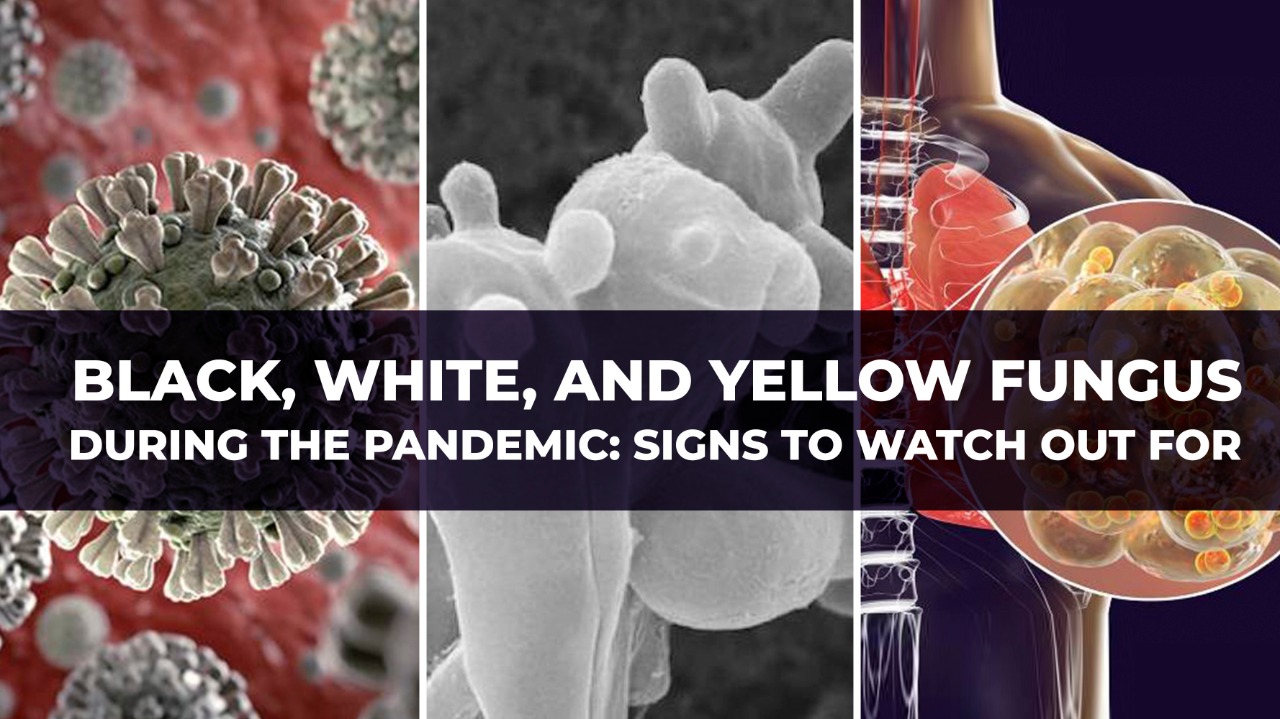Hetero Healthcare
01 Jun 2021

The COVID-19 pandemic has brought along with it many difficult challenges or complications. India is now facing the attack of life-threatening fungus infections to covid suffering or covid recovered patients (2-4 weeks) during the pandemic. Initially, it was the black fungus, and gradually scientists found the existence of white and yellow fungus. India has registered 11,700 cases of Black Fungus till May 25, 2021. Here in this blog, we would brief on what these fungus diseases are, their symptoms, and risk factors? Finally, we will know how to manage if you get this disease and what guidelines people should follow to prevent themselves from getting this disease.
Black Fungus disease is a life-threatening but rare fungal infection caused by mucormycetes. The mucormycetes are a group of molds belonging to the order Mucorales. The fungi that have been isolated from more than 70% of cases of mucormycosis is Rhizopusoryzae. A weakened immune system and an infected lung, as in COVID-19, leads to the easy entry of fungal spores into the body to germinate and attack the tissues. Mucormycosis most often spreads across the nose and sinuses. From there, it spreads to the eyes, causing blindness or cause headaches, and seizures. The fungal infection is called black fungus because after the attack of the fungus on the nose, face, eye orbits, lungs, and brain, the tissues turn black as they are dead.
Once the fungal spores are inhaled, they invade the sinuses or lungs of the patient. This leads to severe disease with the following warning signs and symptoms:
White fungus infection is dangerous than black fungus infection. It affects not only the lungs but also the nails, skin, kidneys, and brain. Recently, there has been a case where the white fungus has been found to cause a hole in the intestine of women in New Delhi, India. The infection can be caused due to low immunity in COVID-19 people when they contact a surface containing the Rhizopusoryzae fungus. This can be unhygienic water and other unsanitary environments. White fungus is dangerous than black fungus because it causes damage to vital organs that may lead to the breakdown of CNS, respiratory organs, digestive tract, kidneys, nail beds, or even private parts. The fungal infection is called white fungus because of white color discharge from the patient's private parts.
The majority of persons infected with the white fungus had respiratory symptoms similar to COVID-19, but they tested negative for the virus. According to experts, X-rays or chest scans can precisely anticipate the severity of the disease. Some of the symptoms of white fungus include:
Yellow Fungus is a more deadly fungal infection than the black and white fungus as it begins internally. It is dangerous as the symptoms of the disease are not visible outside, which delays diagnosis. The fungal infection is called yellow fungus, as the pus formed in the wounded area is yellow.
Initial warning signs
Later stage symptoms
Patients with the following risk factors are more prone to get this fungal disease that includes:
The Indian Council of Medical Research (ICMR) has laid out advisory guidelines for the management of Mucormycosis during the time of COVID-19.
The ICMR has also put guidelines on how to prevent getting a fungal infection during COVID-19.
References
Hetero Healthcare

Hetero Healthcare27 May 2024
The Thyroid: Understanding Your Body's Master Gland
The thyroid gland, a small butterfly-shaped gland located at the base of your neck, plays a critical role in regulating your metabolism.

Hetero Healthcare25 May 2024
Taking Control of Your Breath: Understanding and Managing Asthma
Asthma can feel like a constant battle for air, leaving you breathless and wheezing. But with knowledge and the right approach, you can take control of your asthma and live a full, active life.

Hetero Healthcare30 Apr 2024
A Comprehensive Guide to Malaria
Malaria, a mosquito-borne infectious disease, continues to pose a significant threat to global health. At Hetero Healthcare, we are committed to raising awareness about this preventable illness and empowering individuals with knowledge to protect themselves. This comprehensive blog delves into the causes, symptoms, and effective prevention strategies for malaria.

Hetero Healthcare30 Apr 2024
A Guide to Parkinsons Disease for Patients and Caregivers
At Hetero Healthcare, we understand the profound impact Parkinson's disease (PD) can have on individuals and their loved ones.